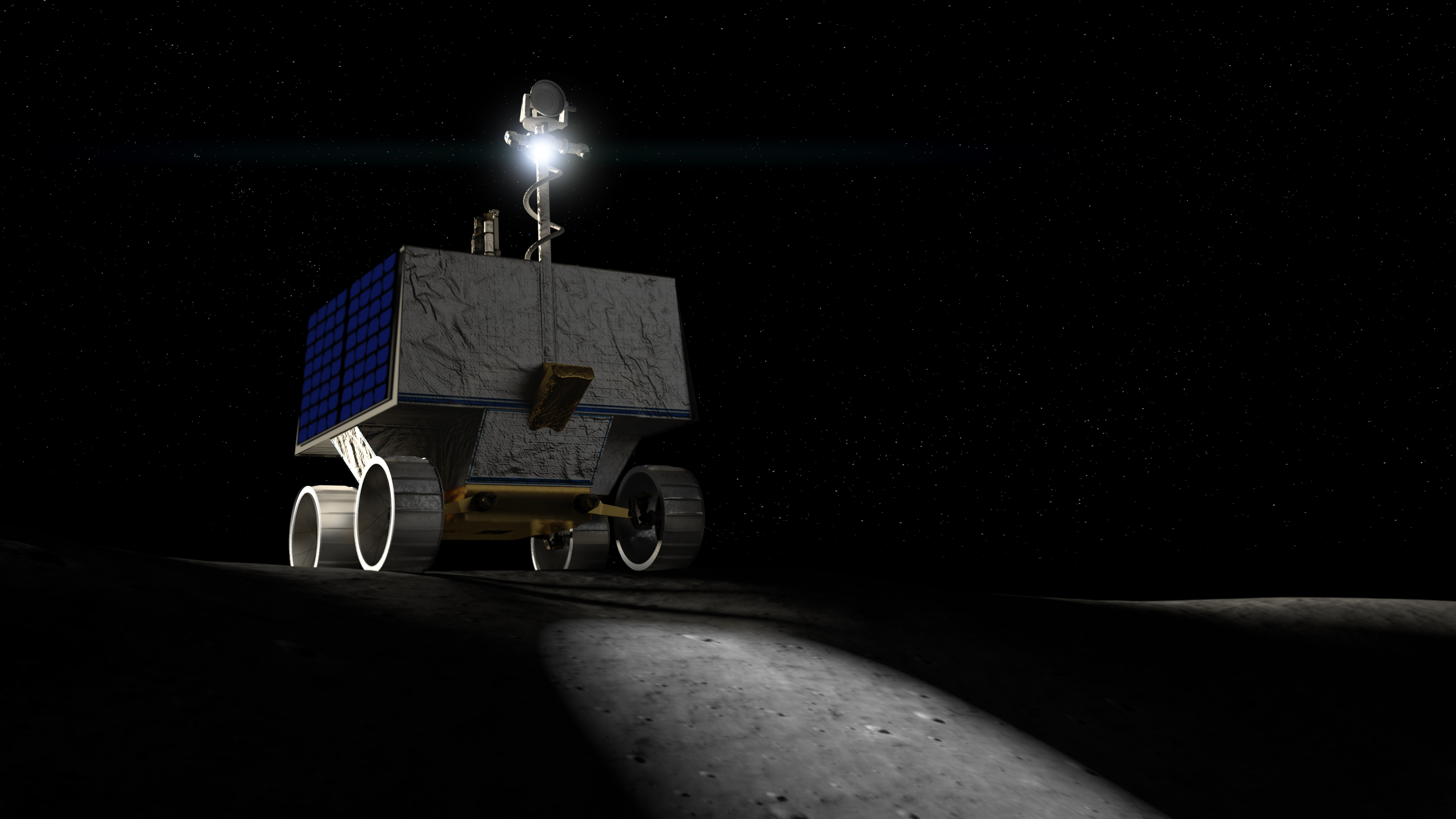Planetary and lunar scientists Kathleen Mandt and Parvathy Prem from the Johns Hopkins Applied Physics Laboratory (APL) in Laurel, Maryland, were selected as new team members of NASA’s Volatiles Investigating Polar Exploration Rover, or VIPER, mission, the agency announced last month.
Their proposed projects for the mission, along with six others selected, will provide critical information about ice and other volatile materials at the Moon’s South Pole and take a major step toward establishing a long-term presence on the Moon through NASA’s Artemis program.

“This mission is going to set the tone for future exploration of this region of the Moon,” Mandt said. “We’re not only going to learn a lot of things that will inform future missions about operating in this unique environment, but we will also demonstrate the science potential of exploring this region of the Moon.”
Slated to launch in late 2023, VIPER will land in the Nobile region of the Moon’s South Pole, where the golf-cart-sized rover will journey at least 12 miles during its mission of 100 Earth days. It will perform a close-up study of permanently shadowed regions and the concentration of water and other resources there.
As NASA’s first mobile robotic mission to the Moon, and its first resource mapping mission on another celestial body, VIPER will determine where on the Moon we’re most likely to find water and where it will be easiest to access. That information will inform researchers about the origin and distribution of water on the lunar surface, while also helping them determine how ice and other resources can be harvested for future human space exploration, both on the Moon and on Mars.
“This mission isn’t about just science or exploration — it’s both,” Prem said.

Prem’s proposed project will model the transport of volatiles around the Moon during the mission. Building on her previous work simulating the transport of gases emitted by lunar landers, Prem’s models can provide the VIPER team with predictions of how volatiles released during VIPER’s landing and explorations may be redistributed. She expects the rover will also help hone model details about other sources of lunar volatiles, such as micrometeoroid impacts.
Mandt’s project, on the other hand, will use VIPER’s instruments to trace the origin of these lunar volatiles by studying their composition. The investigation will particularly look for isotopes — atoms of the same element that have a different number of neutrons — and noble gases, such as helium or argon, which can help decipher the volatiles’ origins — comets, asteroids, micrometeoroids or volcanoes — and fill gaps in the history of the Moon.
“Understanding the Moon’s history, particularly when it comes to impacts on the Moon, is critical to understanding the history of Earth as well, because we don’t have that impact record on the Earth’s surface anymore,” Mandt said.
Drilling down to a maximum depth of a meter, VIPER will be able to extract volatiles as old as 1 billion years — roughly a quarter of Earth’s entire history. “Using volatiles, we can learn more about what was impacting the Moon and, in turn, what has likely also impacted Earth,” Mandt said.
“It’s quite possible that despite making tremendous advances in our understanding of lunar polar volatiles, this mission is going to end with more new questions than answers,” Prem added, “simply because this is an environment unlike anywhere else a rover has been before.”
VIPER is part of NASA’s Commercial Lunar Payload Services, or CLPS, initiative, which employs commercial providers to integrate, launch and land payloads on the Moon.
Related Topics
Science
For Media Inquiries
For all media inquiries, including permission to use images or video in our gallery, please contact:
Michael Buckley
All Media Resources

